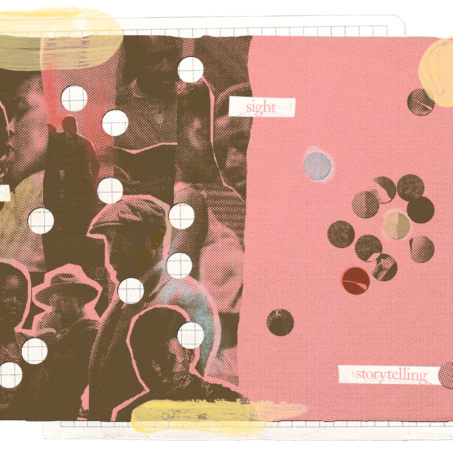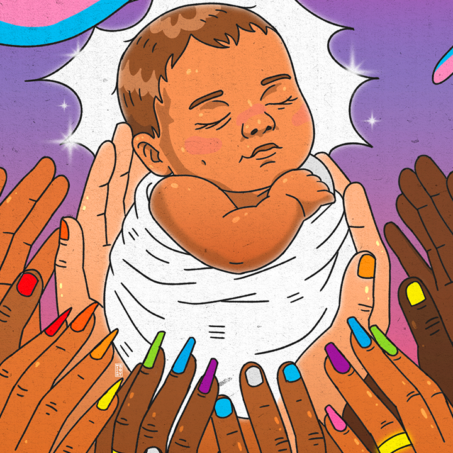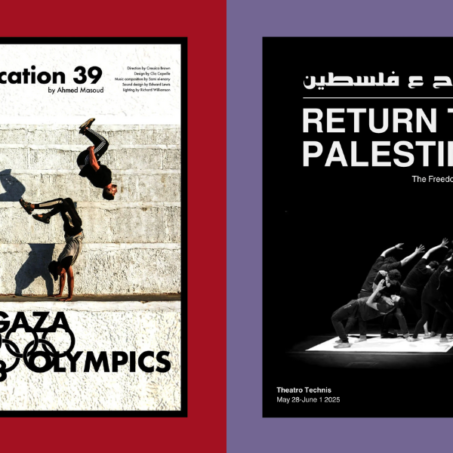Mauricio Holc is a 34 year old photographer and filmmaker from Oberá, Misiones, Argentina. His home, situated between Brazil, Paraguay and Argentina, provides a constant source of inspiration due to its deep diversity. Mauricio then highlights this diversity through his work, hoping that through it he can create a more accepting and inclusive world. We caught up with him to discuss chronicling the unseen, his project SER LIBRE and his hopes for the next generation.
Where are you based and what excites you about the creative community around you?
I live in Oberá, Misiones, a small city in the north of Argentina, between Brazil and Paraguay, and I love that because there is a very interesting cultural and creative mix, where diversity is fundamental.
How has your lived experience shaped your practice?
Most of my life I was ‘inside the closet’ repressing and denying my true self. When I came out I partly ‘liberated myself’, but not completely, I still carried many prejudices within me, imposed by a patriarchal and heteronormative society adverse to what is ‘different’. I was still denied much of my being.
Photography saved me, freed me, and marked the beginning of a new life, a new version of me that I always wanted and longed for, but couldn’t have before. It is through photography that I’ve been able to reflect on my life and experiences. That’s something that’s so beautiful about art, it’s intimately connected with the artist, their experiences, essence, and way of seeing the world. Today my work as an artist is intimately related to me, to what I believe and what I feel.

You say that ‘photography saved you’ – what started your journey into photography?
Actually, my beginnings in photography happened by chance when I bought a reflex camera to take photos at a concert in 2010. After that, I became more and more interested in the medium and went on to study photography and filmmaking. Many years passed until I began to find myself through photography.
What are some of your biggest influences and motivations in your work? What issues are you passionate about working on?
One of the biggest influences in photography that helped me free myself and find my purpose as an artist and as a human being is VOGUE’s PhotoVogue global platform. It’s a community of visual artists where diversity prevails, something which I believe is both necessary and fair.
Since 2018, when I started in the community, I have learned a lot, met great artists and had them inspire my work. I am also very motivated and influenced through the people I meet in my day to day life via, the cinema, music, social movements, the LGBTQI+ community and the feminist movement.
I am passionate about working on issues I identify with and above all on issues that are adverse to societies’ binaries. I want to emphasise the diversity of this world and its beauty.
Why is representation so important?
To feel part of this world is to feel represented. As human beings we seek to see ourselves reflected in the other, we seek to fit in, to feel part of a community, to belong. The way to achieve this is by making other realities visible. We need to share other stories to see that we are not alone in this world, that we are beautiful just the way we are.
What role do you think photography can play in creating change and what change do you hope to inspire through your work?
I believe that photography plays a fundamental role in changing perspectives. It is also so important for making visible and narrating other identities and realities of those who have been systematically unseen and silenced throughout history. All of us need to see ourselves represented to feel part of this world. With my work I seek to inspire other people not to feel alone, to feel visible, to feel part of this world and to find themselves represented and loved. At the end of the day we all seek that; to belong.


Can you tell us a bit more about your recent SER LIBRE series?
SER LIBRE (BE FREE) is a project that reflects part of my life. Through the stories and photographs of different people it teaches us that freedom is a right which often manifests through diversity.
That is why it is crucial to include distinct narratives that have been often unseen in a patriarchal society. Life blossoms when we connect with others .
The curator for this project Maria Alejandro explains it beautifully: “By proclaiming our identities and expressing the multiplicity of ways we have of inhabiting our own bodies, we can see a world where others can feel accepted. To tell stories with our bodies is to think about the world we live in, the skin we are nested in, and to seek out the truth where our lives are our own, not borrowed, but free.”
What is one of your favourite moments from your SER LIBRE Series? And where do you see the project evolving next?
One of my favourite moments has to be meeting Camila Del Campo Grandal. She’s an actress, model, activist, and dancer who has a birthmark called a port-wine stain. The first time I saw Camila was on Instagram and I was very moved because my grandmother has the same birthmark, and previously I had never seen photos of that uniqueness on social media before. I contacted her and we agreed to meet so that she could be part of my project SER LIBRE.
Meeting Camila was extraordinary. She is a beautiful person with such a vibrant energy who fights for a better world with greater representation. I experienced many emotions and sensations when portraying and talking with Camila. We laughed and cried together and I think that those experiences are the most valid and beautiful that we can experience as human beings.
SER LIBRE is so far the most important for me in a very personal way, that’s why I expect a lot from it. I want to exhibit it globally and generate an awareness and empathy in people, where others can feel visible and represented, where the struggles of the people portrayed freely can inspire others and bring hope.


What excites you about the current feminist/LGBTQI+ movements you are seeing around you at the moment in Argentina? And what are your hopes for younger generations?
Argentina is the most progressive country in terms of human rights in all Latin America, and in some areas we’re the most progressive worldwide. We have acquired very important rights in the last two decades: the same-sex marriage and adoption law, the gender identity law, legal abortion, ESI (Integral Sexual Education) and the trans quota law, among others.
For me it is very important to live in a country where my individual freedom is not conditioned by the state, where my rights are equal to other people, where I can be free being who I am.
Argentina has been, and continues to be, a great model and example for other countries regarding the fight for the right to legal abortion and its decriminalisation through the green wave of the feminist movement.
Every day I see great growth in the fight for equality and that excites me a lot. It gives me hope for a better world where we can all BE.

Join our mailing list
Sign up for shado's picks of the week! Dropping in your inbox every Friday, we share news from inside shado + out, plus job listings, event recommendations and actions ✊
Sign up for shado's picks of the week! Dropping in your inbox every Friday, we share news from inside shado + out, plus job listings, event recommendations and actions ✊
Despite all this, there is also a lot of resistance to change in Argentina and many of the laws are not always applied or accepted.
I hope that new generations can live in a world where everyone can be free, where everyone can feel visible and represented and where differences are celebrated and not stigmatised. I want them to be part of a world where “being different” is not a conditioning factor, a world where people don’t have to go through what we and previous generations went through. A feminist world.

What are your hopes for the future? Both in regards to your career and also personal development?
For my future, I hope to be able to work more actively with clients who seek diversity and inclusion. I want a space where I can also grow both as a person and as a professional.
Generally, I hope for a society where human beings can feel safe and free being who they are, loving whoever they want and with the same rights as everyone. A society that celebrates differences and moves away from the binaries imposed from birth. A society without oppressed or oppressors. I hope for a world where minorities stop being ‘minorities’, where a person will not be persecuted or discriminated against because of their gender, sex, skin colour, religion, sexual orientation… a fairer world where everyone we can BE.
What can you do?
Books:
- Trans Power by Juno Roche
- The Transgender Issue by Shon Faye
Photographers/people/organisations to follow:
- Archivo de la memoria trans @archivotrans (Space founded by María Belen Correa, for the protection, construction and vindication of the Trans Memory in Argentina)
- Vascular Red @vascular.red (A network of containment, accompaniment and awareness of port-wine birthmarks created by Camila Del Campo Grandal (who is part of the “SER LIBRE” project)
- Camila Del Campo Grandal @cami.del.campo (Model, actress, dancer, activist, feminist from Argentina)
- Camila Falquez @camilafalquez (Photographer)
- Lee-Ann Olwage @leeannolwage (Photographer)
- Anna harf @anaharff (Photographer)
- Agostina Valle Saggio @fendromena (Photographer)
- Ale Carmona @alecarmonafoto (Photographer)
- Gabz @gabz404 (Photographer)
- Jude Lartey @jude.lartey (Photographer)
- Kweku Ian @kweku_yeboah1 (Photographer)
- Angelika Kollin @angelikakollin (Photographer)
Playlists:
- Requiem for my friend – Zbigniew Preisner (This playlist is a postmortem tribute to the Polish director Krzysztof Kieślowskiare, songs inspiring in the liturgy of the catholic mass for the dead, although I’m not Chatolic, I found myself very inspirational and in a sad good way mood that accompany me when I work with my photos and projects. I found myself deeply moved when I’m alone focused on my work listening to this type of music. It’s like I can feel the pain and the joy of the portrayed people I had worked with.)
- This is Dead Can Dance – Dead Can Dance (I found the music of Dead Can Dance very inspirational for my work and my life, like the playlist before, I feel very connected with my work and emotions listening to this.)
Movies:
- Laurence Anyways (Xavier Dolan)
- La enfermedad del domingo (Ramón Salazar)
- Trzy kolory; Niebieski, Biały, Czerwony (Krzysztof Kieślowski)
- Podwójne życie Weroniki (Krzysztof Kieślowski)













